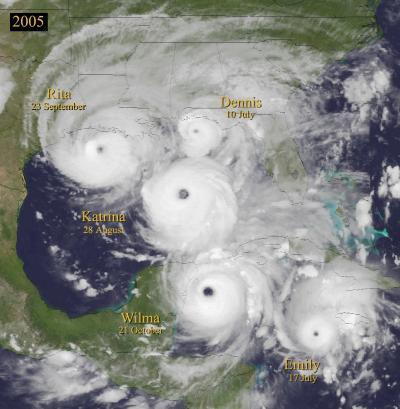In recent years, the relationship between hurricanes and climate change has become a source of public interest, significant scientific debate, and a focus for current research. The potential relationship between hurricanes and climate change has great implications for society, especially in coastal regions affected by these extreme storms. Recent scientific evidence suggests that hurricane intensity may be increasing due to warmer tropical sea surface temperature (SST), but the connection to Atlantic hurricane frequency is less conclusive. Climate change can be defined as “any systematic change in the long-term statistics of climate elements (such as temperature, pressure, or winds) sustained over several decades or longer” (Glickman 2000, Glossary of Meteorology, 2nd edition). This change may be caused by any combination of (1) natural influences, such as changes in the energy being emitted from the sun, changes in the orbit of the earth around the sun, volcanic activity, and fluctuations in ocean and atmospheric circulation, and (2) human activities (called anthropogenic forcing) such as the burning of fossil fuels that change the composition of the atmosphere. Hurricanes and Climate content: |


